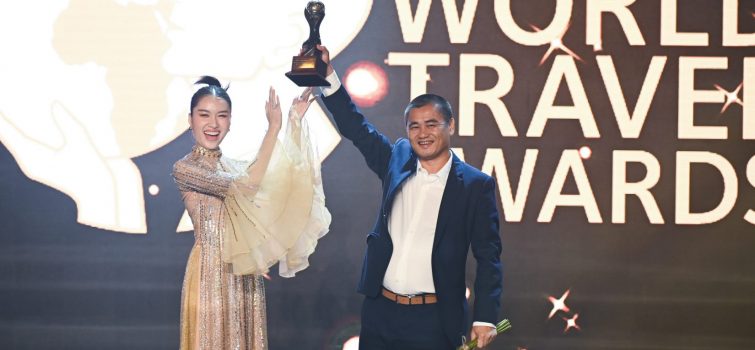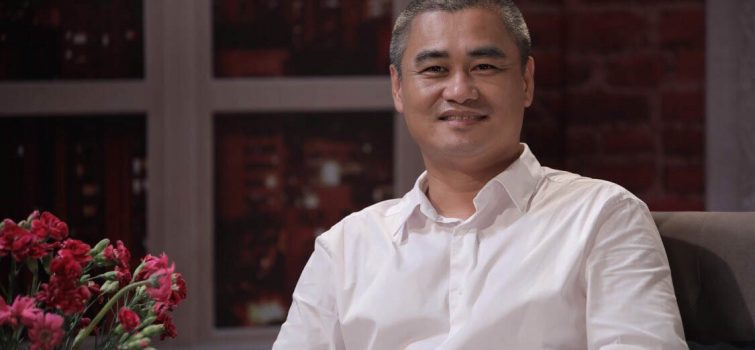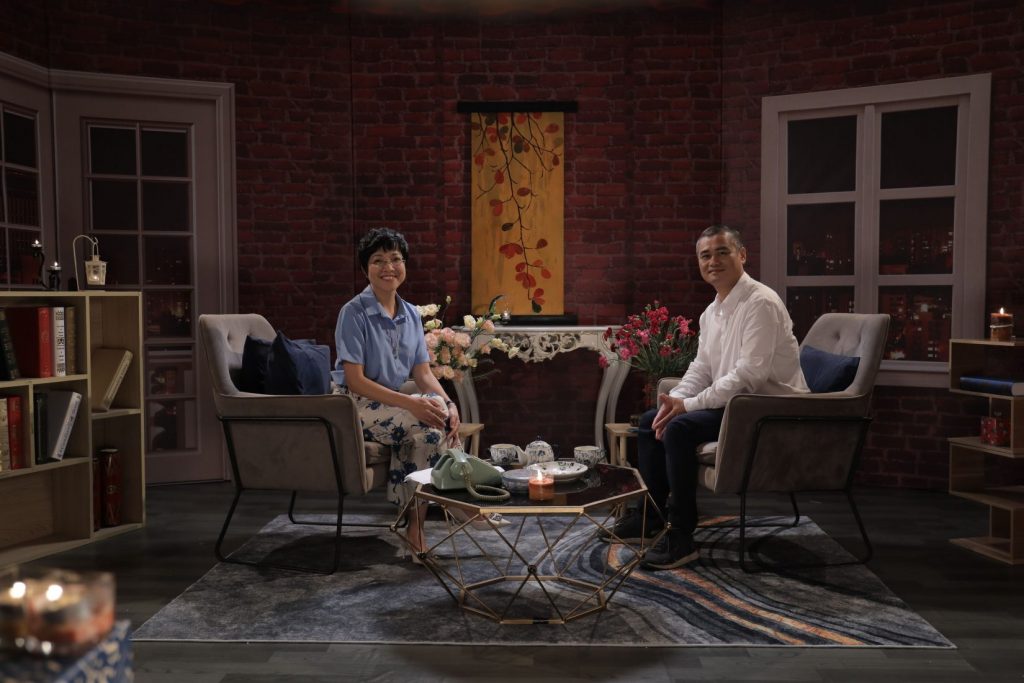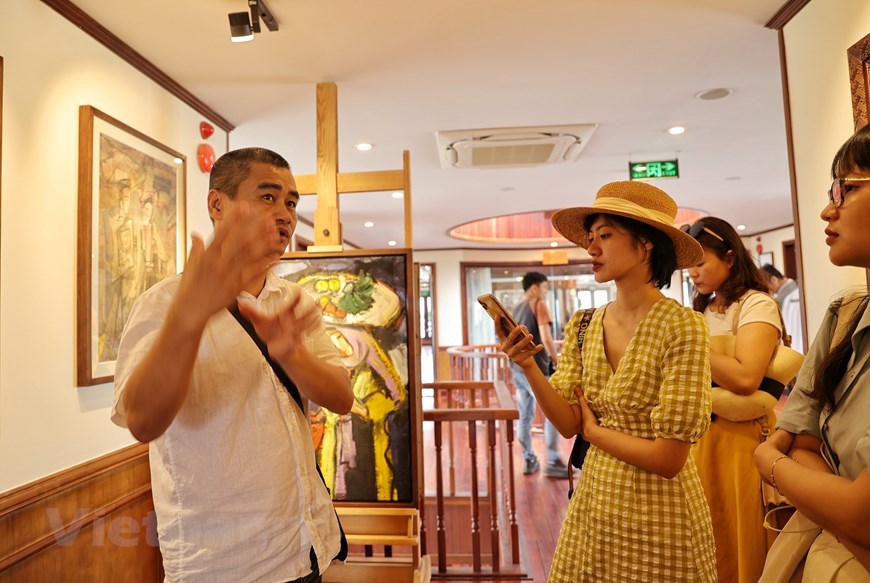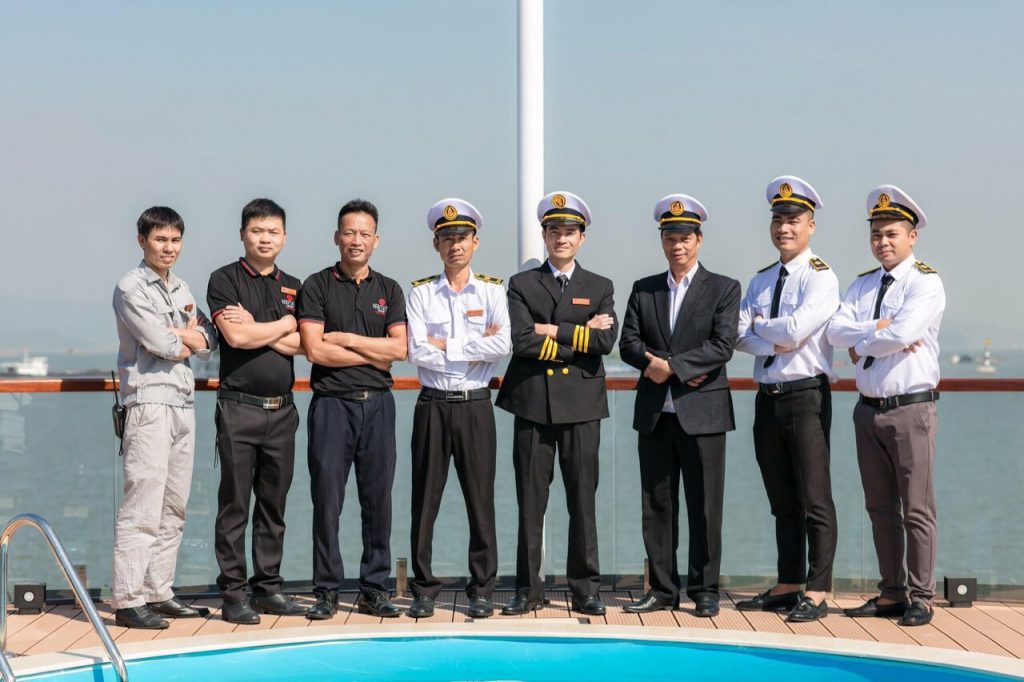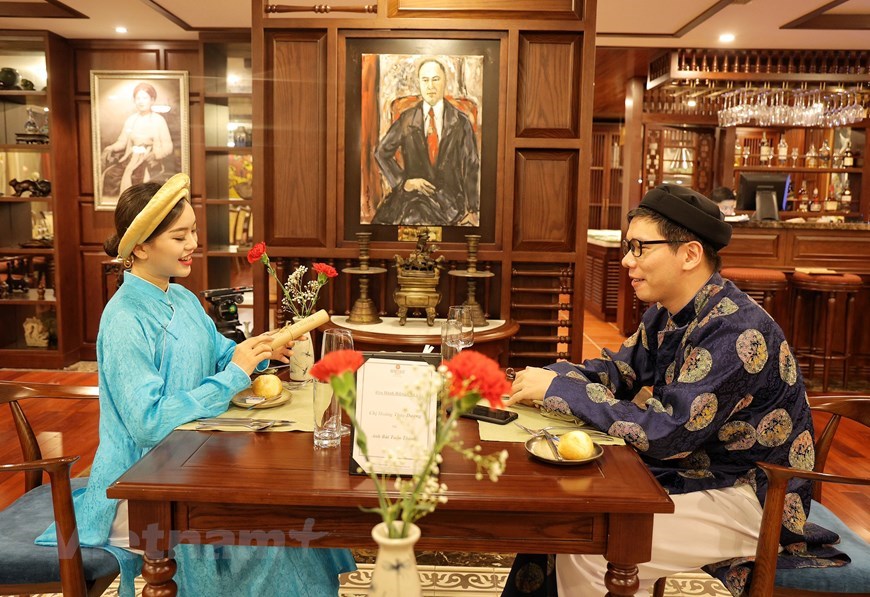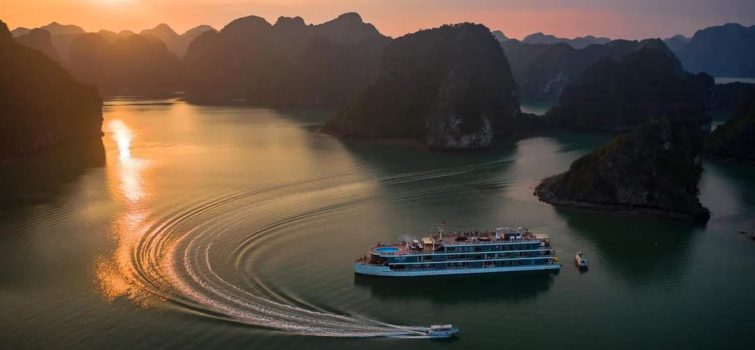Vietnam Attracts the High-End Traveler
Luxury Travel in Vietnam on the Rise and Affordable
Vietnam is emerging as a luxury destination in the world tourism map, Mr. Pham Ha, a travel guru in the tourism industry in Vietnam reveals the current luxury travel trends and his products for 2022. Ha is the founder and CEO of Lux Group which is group of small giants including Lux Limo, Lux Mice, Lux Hotels and Resorts, Adventura Travel, Secret Hideaways, Lux Travel Dmc, Luxury Travel, Emperor and Heritage Cruises.
The Travel Experts of Virtuoso in the U.S. just completed a trend survey of its member agencies, each of whom specializes in catering to the needs of luxury travelers. The survey indicates that Vietnam and Cambodia are the hottest destinations in Southeast Asia.
“With new luxury hotels and world class golf courses having recently opened or set to open soon, and the introduction of luxury train journeys, exclusive cruises and upscale private tours spanning the length of the country, Vietnam is fast emerging as an exciting destination for the high-end traveler.” said Pham Ha.
Today’s luxury travelers want to be entertained and stimulated, rather than simply pampered, and Vietnam offers a magical mix of tropical beaches, post-colonial charm, a string of world heritage sites, stunning inland scenery, world-renowned cuisine and a home-grown flair for hospitality.
“Today, luxury travel is about experiences and doesn’t need to be limited to the super rich. Indeed, it is a little-known fact that almost anybody can afford to travel in style, elegance and comfort without breaking the bank or even spending much more than traveling ordinarily. The world of luxury travel is actually a very accessible one.” reveals Pham Ha.
Upscale tours today also offer “off the beaten track” experiences. In a credit crunch environment, high end tourists also expect efficiency, seamless travel, value for the money and a return on personal values. Many will opt for short trips for their families which offer a slice of local culture, a splash of adventure, and authentic experiences.
Upscale tailor-made tours in Vietnam now come replete with yacht, cruises, helicopter tours, limousine services, and the whole nine yards.
There is also plenty of flexibility for all tours. Travelers are free to request helicopter tours, cycling excursions to craft villages, scuba diving or snorkeling trips, reservations at the finest restaurants in the land, meetings with renowned artists, chefs and designers, shopping recommendations, spa reservations, tours with special-interest lecturers, and exclusive access to local activities and cultural events.
Each day, tours are designed with flexibility to suit travelers’ personal interests, schedule and energy level. When it comes to luxury tours, the sky’s truly the limit. Lux Travel DMC (www.luxtraveldmc.com) has just won a World Travel Awards 2022 as a Vietnam’s leading luxury destination management company confirming this trend and position of Vietnam luxury tourism in the world tourism map.
What is the difference between a DMC and a tour operator
In the middle of the 19th century, after an ideological change brought about by the Industrial Revolution, the need for leisure and recreational activities arose, allowing the consolidation of tourism as a developing industry.
In 1841 the first group trip in history was registered, planned, and organized by “The Father of Tourism,” Thomas Cook (1808-1892).
Time after, he would create the first travel agency, the oldest in the world, “Cook and Son.” These revolutionary ideas would have an impact on modern tourism in the not-too-distant future.
The arrival of globalization and the evolution of transportation means motivating a phenomenon known as the “Tourist Boom” (1950-1973). This exponential growth gives rise to the need to manage destinations.
The tourist can acquire different principal and complimentary services just by contacting a tourist agent. This allowed the development of other organizations or companies in charge of integrating packages to market them and provide a better service to the tourist. And this is when the figure of Tour Operator starts.
Tour Operator History
The first to emerge are travel agencies, retail companies that offer tourism products or services with or without intermediaries; they are focused on the client’s needs, conceive, create, plan, organize and execute tourism packages for small groups to a mass-market (DATATUR, 2006). Unlike other agents, their priority is to sell and manage package programs for their portfolio of clients.
With time and the expansion of mass tourism, the need to mass-produce to satisfy the destination’s demand was born. Tourist agents had to adapt by creating wholesale tourist products, setting up agencies where the experience and service have been reduced for a more accessible price.
These agents are known as tour operators, organizations that participate in tourism activities as intermediaries between the final consumer and the tourism product (WTO, 1998).
In other words, within the tourism market, they are the creators and distributors of tourism products in destinations that are generally commercial, integrating principal services (lodging, transportation, and food) and complimentary services (tours, excursions, guided visits, etc.).
Whose function is to facilitate trips that are difficult to arrange independently, creating large-scale tourism packages and circuits, marketing them to wholesalers at a single price, or distributing them directly to the client.
Benefits of contracting a Tour Operator
Affordable prices.
Provides a selection of destinations in a specific region
Facilitates travel, packages, and transportation to market trends
The convenience of acquisitions. The tourist purchases all the necessary services (lodging, transportation, food, tour activities) from a single tour operator.
DMC History
In Europe in 1977, Tom Wibecker began to use the term Destination Management Company (DMC) to describe organizations that destroy the standards of traditional tour operators or wholesalers they seek to provide a quality service to the customer. In the mid-’80s, the Society of Incentive & Travel Executives (SITE) acknowledged the peculiar meaning of DMCs.
Destination Management Company (DMC) are professional tour operators and product managers. Offering the best principal and complimentary services thanks to their extensive knowledge of the destination.
A DMC company is a specialists in the planning and organizing of any event, designing itineraries and logistic programs based on the client’s needs, capable of coordinating all local suppliers.
Their vast experience allows them to provide consulting services, in addition to their excellent logistics and management. Their dedicated anticipation of the event elements is another crucial point, ensuring comfort and safety. Successful execution will bring a good reputation for the DMC, exceeding the expectations of all participants.
There are three types of DMCs based on the design and needs of the client that hires their services. That is, by the nature of the group: business (congresses, conventions, fairs, and incentive trips). Specialized (they organize pre-designed trips with a focus such as cultural, sun and beach, ecotourism, romance, among others). And the mixed (combination of the two previous ones).
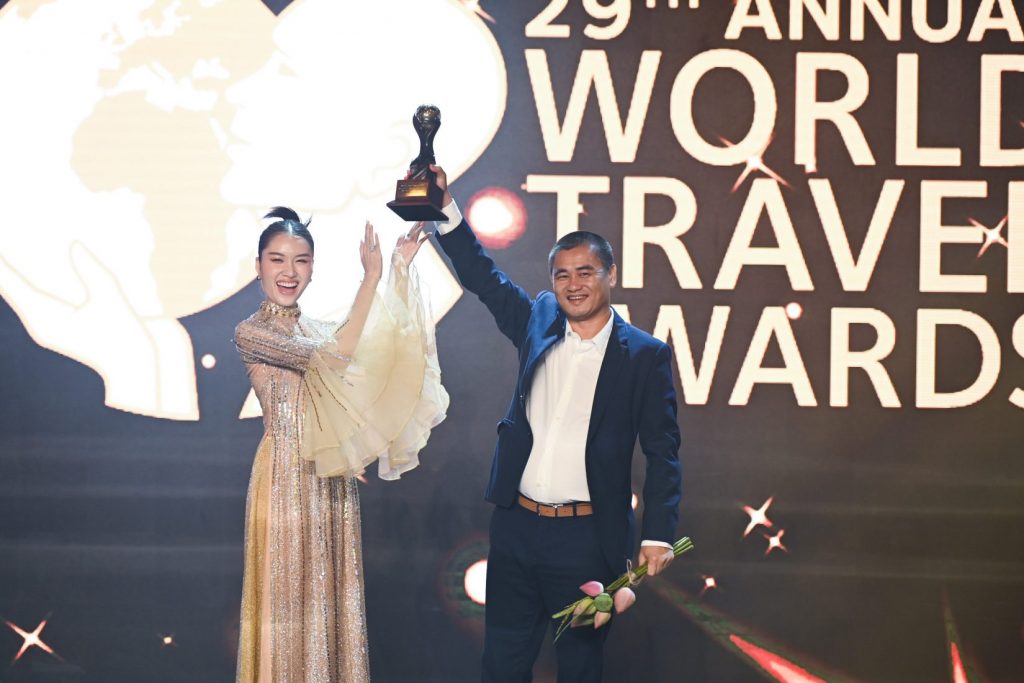
Benefits of contracting a DMC
Personalized service generating an added value in the tourist’s experience.
Design of unique and creative products tailored to the customer’s needs.
They perfectly know the characteristics and conditions of the destination, can provide access to exclusive locations.
Negotiation capacity to determine the costs associated with the requested requirements.
They are skilled in planning, coordinating, organizing, and supervising events.
They provide advisory and consulting services.
High quality (hygiene, attention, reception, orientation).
Solid relationships and connections that maximize the budget.
In addition to functioning as network generating elements through the concentration of the global supply of tourism services provided by small local businesses (Jamal and Getz, 1995). They also function as network .
So, what is the difference between tour operators and DMCs?
In short, the tour operator creates products for a mass market where the main objective is sales volume with limited customer service. On the other hand, the local integrated travel agencies or DMC’s have a specialized approach by niches and provide personalized attention, and customer satisfaction is their principal objective.
Christopher H. Lee, president of ACCESS California, uses a peculiar analogy to refer to this type of organization’s work. His philosophy poses contrasts aspects of a DMC with an architect since this organization can design an event thanks to its vast knowledge and experience in the field to satisfy the requirements of the meeting, convention, congress, or incentive trip, in addition to meeting the client’s expectations by optimizing the destination’s resources and limiting itself to the infrastructure of the area.
With the digital era, tourism has evolved towards new technologies, creating new distribution channels through networks such as the Internet, modernizing its services, and offering new tourism products.
Visit our award-winning destination management compnay at
www.luxtraveldmc.com
Văn hóa là nguồn lực đầu vào cho phát triển kinh tế
Sự khác biệt, độc đáo ở văn hóa, con người, cảnh quan thiên nhiên và ẩm thực là tài nguyên, thế mạnh cho du lịch Việt Nam phát triển một cách bền vững. Với nhiều doanh nghiệp du lịch, đây cũng chính là nguồn lực để họ khai thác, tiếp tục vươn lên mạnh mẽ, đóng góp cho sự phục hồi của du lịch và kinh tế đất nước.
Nhân dịp đầu năm mới 2022, ông Phạm Hà, Chủ tịch Hội đồng quản trị, kiêm CEO Tập đoàn Lux Group chuyên đầu tư, kiến tạo, kinh doanh những sản phẩm, dịch vụ du lịch siêu sang tại Việt Nam đã có những chia sẻ về vấn đề này.
Là doanh nghiệp lữ hành có thế mạnh đón du khách quốc tế đến Việt Nam và đưa người Việt Nam đi du lịch nước ngoài, sứ mệnh quảng bá văn hóa Việt Nam của Lux Group được ông triển khai ra sao?
Lux Group tự hào về văn hóa, di sản, lịch sử của Việt Nam và chúng tôi coi đó là sứ mệnh của người làm du lịch cho khách quốc tế đến và người Việt Nam đi du lịch. Đồng thời, chúng tôi dùng “sức mạnh mềm” văn hóa làm nguồn lực đầu vào cho phát triển kinh tế.
Chúng tôi có một hệ sinh thái bao gồm vận chuyển, lữ hành, du thuyền với hai thương hiệu Emperor Cruises và Heritage Cruises hoạt động tại những vùng vịnh biển đẹp như vịnh Nha Trang, Hạ Long, Bái Tử Long, Lan Hạ. Sắp tới, chúng tôi đưa thương hiệu Emperor Cruises Legend Phú Quốc vào kinh doanh tại Phú Quốc. Lấy cảm hứng từ bài thơ “Tây Tiến” của nhà thơ Quang Dũng, chúng tôi xây dựng khu nghỉ núi Secret Hideaways Pù Luông, Thanh Hóa. Tất cả những thương hiệu này đều giầu cảm xúc, những câu chuyện văn hóa và lịch sử Việt Nam để giới thiệu cho du khách quốc tế.
Trong chiến lược phát triển ngành công nghiệp văn hóa của đất nước, theo ông ngành du lịch có vai trò như thế nào trong việc quảng bá, xuất khẩu văn hóa?
Tôi đi nhiều nơi trên thế giới thì thấy rằng Việt Nam chúng ta có nhiều lợi thế cạnh tranh trong kỷ nguyên 4.0. Ba lĩnh vực chúng ta có thể đi tắt đón đầu và phát triển nhanh chóng vì nhiều tiềm năng và có sự khác biệt độc đáo là du lịch, nông nghiệp và công nghệ thông tin. Du lịch Việt Nam phát triển mạnh mẽ trong thời gian qua và khẳng định là một ngành kinh tế, đóng góp khoảng 10% GDP và tạo ra hơn 2 triệu việc làm trực tiếp và gián tiếp, góp phần xuất khẩu tại chỗ, quảng bá văn hóa di sản, con người đất nước Việt Nam.
So với các nước Đông Nam Á như Thái Lan hay Malaysia, Việt Nam khác biệt, độc đáo ở văn hóa, con người, cảnh quan thiên nhiên và ẩm thực. Đây là tài nguyên và thế mạnh rất lớn để phát triển du lịch Việt Nam một cách bền vững. Với thế mạnh này, Việt Nam cần cụ thể hóa việc coi du lịch là một ngành kinh tế thực sự, phát huy giá trị tài nguyên du lịch, định vị lại thương hiệu du lịch quốc gia như du lịch di sản hay du lịch biển.
Đồng thời, tập trung vào sự thỏa mãn của du khách; tăng chất hơn là lượng, từng bước tháo gỡ những nút thắt như thể chế chính sách, đào tạo nguồn nhân lực có chất lượng, tạo nhiều trải nghiệm du lịch mới lạ, hấp dẫn cho du khách đến dễ dàng hơn để họ đến vui hơn và tiêu tiền nhiều hơn và xúc tiến du lịch sao cho hiệu quả hơn.
Là một doanh nhân rất yêu văn hóa, ông có đam mê sưu tầm tranh, viết sách, bình thơ…. Điều này đã giúp gì cho ông trong việc chèo lái doanh nghiệp trong những thời điểm đầy sóng gió?
Tôi làm trong nghề hạnh phúc. Sứ mệnh cá nhân của tôi là mang lại hạnh phúc (deliveringhappiness) cho cá nhân, gia đình, đồng nghiệp, tổ chức và cộng đồng bằng “5P”, trong tiếng Anh là Passion, Purpose, People, Planet và Prosperity (làm vì đam mê, có mục tiêu rõ ràng, làm vì con người, hành tinh tốt đẹp hơn, xanh hơn, đẹp hơn và vì sự thịnh vượng mỗi cá nhân, của doanh nghiệp và cộng đồng).
Cuộc đời là hàm tổng của các lựa chọn, tôi chọn du lịch và đó là nghề hạnh phúc, tôi mang lại hạnh phúc, chạm vào cảm xúc với những sản phẩm trải nghiệm mình làm ra. Tôi cũng hơi nghệ sĩ trong một doanh nhân nên đâu đấy cũng là những tác phẩm du thuyền nhưng mỗi chiếc là một độc bản giữa thiên nhiên, một câu chuyện hay phản ánh câu chuyện của cuộc đời tôi, giấc mơ thủa nhỏ thành hiện thực.
Tôi diễm phúc cảm được nghệ thuật, biết yêu cái đẹp và sáng tạo ra những tạo tác từ yêu thương và đưa những yếu tố văn hóa và nghệ thuật dân tộc, những câu chuyện lịch sử vào sản phẩm du lịch trải nghiệm. Đó cũng là sự khác biệt độc đáo mà tôi tâm huyết đặt vào mỗi dự án tôi làm.
Được biết, ông rất ngưỡng mộ tinh thần kinh doanh của doanh nhân Bạch Thái Bưởi, vậy trong giai đoạn đầy thách thức hiện nay, tinh thần này đang tiếp lửa như thế nào cho ông?
Cụ Bạch Thái Bưởi là một nhà tư sản dân tộc tiêu biểu kinh doanh thành công và sự ngưỡng mộ của nhiều người Việt, để lại nhiều bài học đáng học hỏi cho nhiều thế hệ doanh nhân. Có thể nói cụ Bạch Thái Bưởi (1874-1932) là một trong những doanh nhân thế hệ đầu tiên của Việt Nam mà tôi gọi là “kinh doanh thời 1.0”, cuối thế kỷ 19 và đầu thế kỷ 20. Cụ là hiện thân của tinh thần dám khởi nghiệp, dám tận dụng thời cơ, dám trao quền, dám tiếp thu tân thư, dám vận dụng tinh thần yêu nước, dám cạnh tranh đến cùng, dám sáng tạo, dám mở rộng thị trường, dám làm lại từ đầu. Tư tưởng xuyên suốt trong văn hóa kinh doanh là dân quốc phú cường giành lại độc lập.
Thành công như cụ xưa nay hiếm, đặc biệt lại là kinh doanh thành công trong nghịch cảnh, muôn vàn khó khăn, đất nước bị người Pháp nắm quyền và người Hoa nhiều tiền kinh doanh chèn ép. Từ thực tế đó càng thấy tài lãnh đạo của cụ với những phẩm chất truyền cảm hứng. Cụ Bạch Thái Bưởi kinh doanh đa lĩnh vực, nhiều công ty, chi nhánh, hoạt động nhiều nơi, theo mô hình mà ngày nay người ta gọi là một tập đoàn kinh tế. Đặc biệt, ngay từ thời 1.0 đó, cụ Bạch Thái Bưởi đã có những phẩm chất lãnh đạo tuyệt vời. Trong đó, tôi đã học được 10 phẩm chất của cụ. Lãnh đạo là nghệ thuật gây ảnh hưởng. Lãnh đạo là phụng sự, tập trung, đam mê, trao quyền, tự tin, chính trực, sắc bén, quyết đoán, luôn tiếp thu cái mới, sáng tạo.
Cụ Bạch Thái Bưởi thành công còn vì đã thực hiện nghiêm túc 10 tôn chỉ trên thương trường, như thương phẩm, thương hội, tín thực, kiên tâm, nghị lực, trọng nghề, thương học, giao thiệp, tiết kiệm và coi trọng hàng nội hoá. Những giá trị và bài học kinh doanh còn nguyên giá trị để soi rọi và vận dụng cho cuộc cách mạng 4.0 hiện nay để quản trị doanh nghiệp hiệu quả và kinh doanh thành công trên thương trường.
Một trong những ân huệ của cuộc đời tôi là được kết nối với gia đình cụ Bạch Thái Bưởi, được nghiên cứu về cuộc đời và sự nghiệp của cụ, đặc biệt là những bài học kinh doanh thành công, thuật lãnh đạo và những phẩm chất của một người lãnh đạo xuất chúng.
Văn hóa được coi là sức mạnh nội sinh của doanh nghiệp cũng như nền kinh tế nhất là trong bối cảnh không ngừng biến động. Ông đã xây dựng văn hóa doanh nghiệp cho Lux Group như thế nào?
Trước tiên phải hiểu là văn hóa doanh nghiệp là niềm tin vào tổ chức, tư duy và thái độ của nhân viên về công việc họ đang làm, người mà họ đang phục vụ và với chính ban lãnh đạo, chủ doanh nghiệp. Triết lý kinh doanh của Lux Group là phụng sự, và thành công bằng sự tử tế. Lãnh đạo yêu quý, hiểu và giúp đỡ cấp dưới và nhân viên phục vụ khách hàng từ tâm với mong muốn họ sẽ hài lòng.
Lux Group luôn xây dựng tinh thần khởi nghiệp ngay cả khi đã lớn. Chúng tôi luôn đi tiên phong như kinh doanh du thuyền đầu tiên tại vịnh Nha Trang, vịnh Bái Tử Long và sắp tới là thành phố đảo Phú Quốc. Lux Group đi vào thị trường ngách, tìm lối nhỏ vào nhà sang và chúng tôi xây dựng văn hóa doanh nghiệp ngay từ ngày đầu thành lập, định hướng rõ ràng tầm nhìn, giá trị cốt lõi.
Trong một thế giới đầy biến động, ông chia sẻ gì về trách nhiệm của doanh nghiệp, doanh nhân đối với phát triển du lịch bền vững?
Bền vững là phải nhắm tới chất hơn lượng. Chúng ta không nhất thiết đặt mục tiêu số lượng khách năm sau phải cao hơn năm trước mà hãy thoả mãn họ, coi họ là trung tâm xem khách thích gì, muốn gì, không thích gì để cải thiện ngay. Với số hoá các hoạt động thì việc này không khó và cần sớm triển khai và Tổng cục Du lịch là đơn vị đóng vai trò dẫn dắt, chủ động, hiệu quả trong các hoạt động tạo sản phẩm du lịch và xúc tiến.
Từ góc độ doanh nghiệp, chúng tôi xác định, du lịch bền vững và có trách nhiệm cần dựa vào 6 trụ cột chính là: Bảo vệ nguồn môi trường sinh thái tự nhiên, trách nhiệm văn hoá xã hội, tạo việc làm tốt cho người dân địa phương, góp phần phát triển kinh tế, khách hàng thoả mãn, doanh nghiệp có lợi nhuận. Theo đó, chúng tôi định nghĩa du lịch bền vững là phải bảo vệ môi trường sinh thái tự nhiên, cùng nhau tạo ra nơi đẹp hơn cho người dân sinh sống và tạo ra nơi đẹp hơn để du khách tới thăm quan trải nghiệm; bảo đảm văn hoá xã hội, gìn giữ, bảo tồn và phát huy di sản, văn hoá, phong tục tập quán địa phương.
Cùng với nội lực của doanh nhân Việt, nhà nước cần có quyết sách nào để ngành du lịch hồi phục, phát triển trong năm 2022 và giai đoạn tới?
Hậu Covid- 19, cơ hội cho các doanh nghiệp lớn nhỏ là như nhau, tầm quốc gia cũng vậy. Đối với du lịch Việt Nam, chúng ta nên lấy mỏ vàng văn hoá, di sản làm trung tâm, định vị du lịch di sản là thương hiệu du lịch quốc gia. Để Việt Nam thành quốc gia về du lịch trong khu vực, chúng ta cần phải có chính sách cho du lịch và vì du lịch; visa, hạ tầng cơ sở, phát triển nguồn nhân lực, phát triển sản phẩm đặc trưng, mạnh, xúc tiến hiệu quả. Không thực hiện được xúc tiến hiệu quả thì thuê chuyên gia, định vị lại thương hiệu và nhận diện du lịch quốc gia.
Mặt khác, nên coi Covid-19 là dịp tốt để nhìn nhận lại quản lý du lịch theo hướng phục vụ để 100% khách đến rồi yêu Việt Nam, muốn quay lại nhiều lần, thay vì một đi không trở lại như trước kia. Với tiềm năng du lịch biển đảo, ẩm thực, văn hoá, thiên nhiên và con người, du lịch Việt Nam sẽ đứng đầu Đông Nam Á và châu Á nếu khơi thông cơ chế, chính sách triển kinh tế du lịch, chất lượng nguồn nhân lực; có nhiều sản phẩm du lịch trải nghiệm với hàm lượng chất xám và phải định vị được thương hiệu du lịch quốc gia, xúc tiến hiệu quả trong và ngoài nước.
Xin cảm ơn ông!
Hoa Quỳnh
Touching the heritage on Vietnam’s first boutique cruise
The Lux Group is to launch Vietnam’s first boutique cruise bringing heritage alive in the Gulf of Tonkin and on the Red River.
Already operating in Vietnam’s Nha Trang Bay and Bai Tu Long Bay, under the five-star Emperor Cruises brand name, Heritage Cruises, a member of the Lux Group, will launch its first boutique cruise in the Cat Ba Archipelago in the Tonkin Gulf under the brand name of Heritage Cruises.
Launching this May, Heritage Cruises will offer authentic experiences for 40 guests aboard an architecturally designed boutique river and ocean cruise ship in the Gulf of Tonkin. Amenities include a luxury spa, movie under stars, two restaurants, indoor and outdoor lounges, pool bar and swimming pool and 20 suites with picture windows offering river and ocean views.
Heritage Cruises derives the inspiration for its boutique concept and design from the heritage ships of the patriotic entrepreneur Bach Thai Buoi, who transformed transportation on the waterways of Tonkin in the north of Vietnam in the early 20th century.
The cruise ship can accommodate 40 guests at the same time
Being a heritage-inspired designer cruise ship, but still with a boutique concept, Heritage Cruises care about the guest experience, offering them an upscale lifestyle with an artistic twist, together with concierge services.
“Like boutique hotels, boutique cruises are characterized by their intimate atmosphere and idiosyncratic style. They distinguish themselves from larger chain cruises by offering personalized attention and stylish, themed accommodation and a story to tell. We want to create memorable moments that focus on the local culture and arts encountered on the way.” said Pham Ha, CEO of Heritage Cruises.
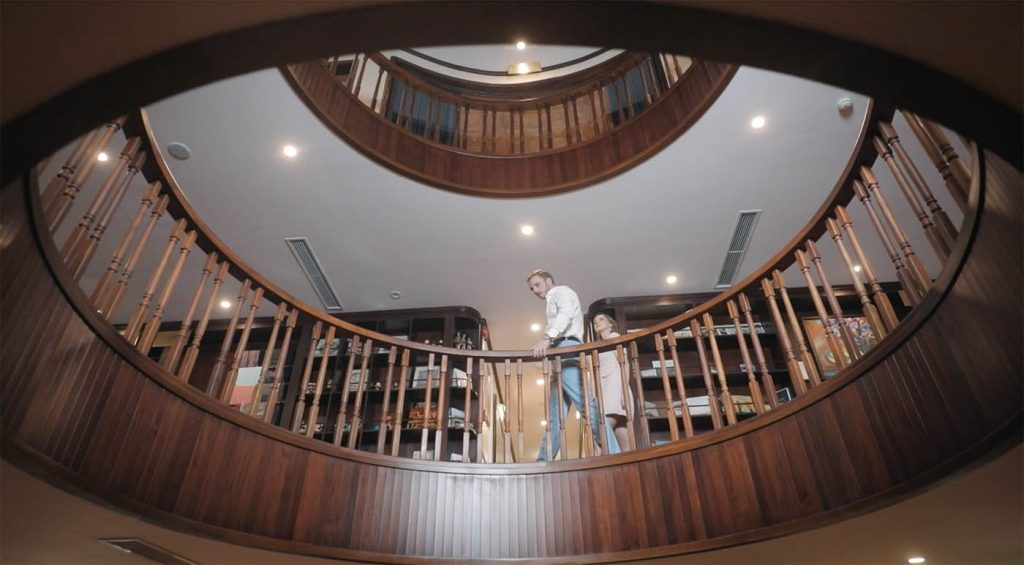
“Our boutique cruise categorizes its ships not with stars but by “character, quality, style and the overall unique experience of staying there”. As Heritage Cruises’ first boutique cruise, which is positioned as four-star rating for the whole experience, we want to raise the bar for the art of cruising in the Halong Bay region. We ensure we give our clients the “ultimate in luxury and sophistication” and “out of the ordinary on- board facilities,” he added.
Beyond offering a cozier atmosphere, the small size of this ship creates a completely different experience, both onshore and on board. Smaller ships allow easy access to remote, less-visited places that the larger vessels just can’t get to, leading to refreshingly unique itineraries. This authentic experience offers the chance to cruise the Gulf of Tonkin (Lan Ha Bay, Bai Tu Long Bay, and Halong Bay) in an authentic and unique style, complemented by personalized service and on-request limousine transfers, which Heritage Cruises offers, taking the 5B highway from Hanoi to cut the journey down to just 1.5 hours.
Heritage Cruises is available for FITs (free independent travelers), small groups and charters. This top-notch cruising experience is for repeat travelers to Vietnam wanting something different, exotic, and out of the ordinary. The exclusive cruising experiences are highly recommended for heritage travelers, seasoned leisure travelers, active holidaymakers, honeymooners, families, fine-art enthusiasts, nature lovers, photographers, groups of friends, VIPs and celebrities.
Cat Ba Island has a surface area of 285km2 and retains the dramatic and rugged features of Halong Bay. This island belongs to Haiphong City – an important industrial city which, together with Hanoi and Halong, forms an important economic triangle in north Vietnam.
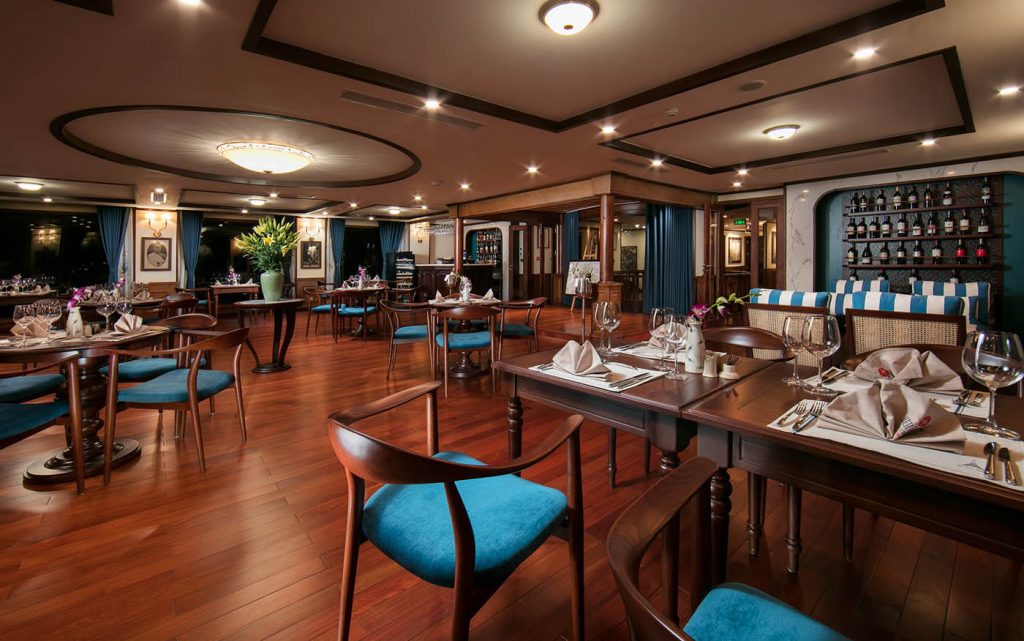
Approximately half of Cat Ba Island is covered by its national park, which is the home to the highly endangered Cat Ba Langur. The Cat Ba Archipelago boasts pristine beaches, secluded lagoons, coves, tropical forests, and lakes, allowing holidaymakers to swim, kayak and bike to fully experience the Gulf of Tonkin. The itinerary also includes the fishing villages of Lan Ha Bay, and watersports such as kayaking, squid fishing, snorkeling and wildlife spotting.
A pristine beach in Cat Ba Archipelago
On the three-deck Heritage Cruises ship, 20 suites range from 33 – 80 square metres, while food and beverage options include Le Tonkin and Indochinerestaurants for Vietnamese gourmet cuisine.
The ship also features an outdoor deck, complete with Vietnam’s first infinity swimming pool on a cruise ship, pool bar, and private cabanas, the Bach Thai Buoi Library for reading and relaxation, the White Lotus Spa offering massages and essential oil treatments, a dry sauna, fitness center, movies under the stars, and games room as well as its art gallery and auction center.
Heritage Cruises offers a floating exhibition, L’Art de l’Annam, with the first designer art gallery of artist Pham Luc, known as the Picasso of Vietnam, along with the works of other famous Vietnamese artists. Guided art tours can be arranged as well as occasional auctions.
Concierge services are a specialty on the vessel, with a one-to-one staff-to-guest ratio ensuring every need is attended to. On board are 40 crew members, including a cruise director and experiences manager.
Apart from daily limousine transfers between Hanoi and Cat Ba Archipelago upon request, the Heritage Cruises team can also arrange for private charter airplanes, helicopters or seaplanes.
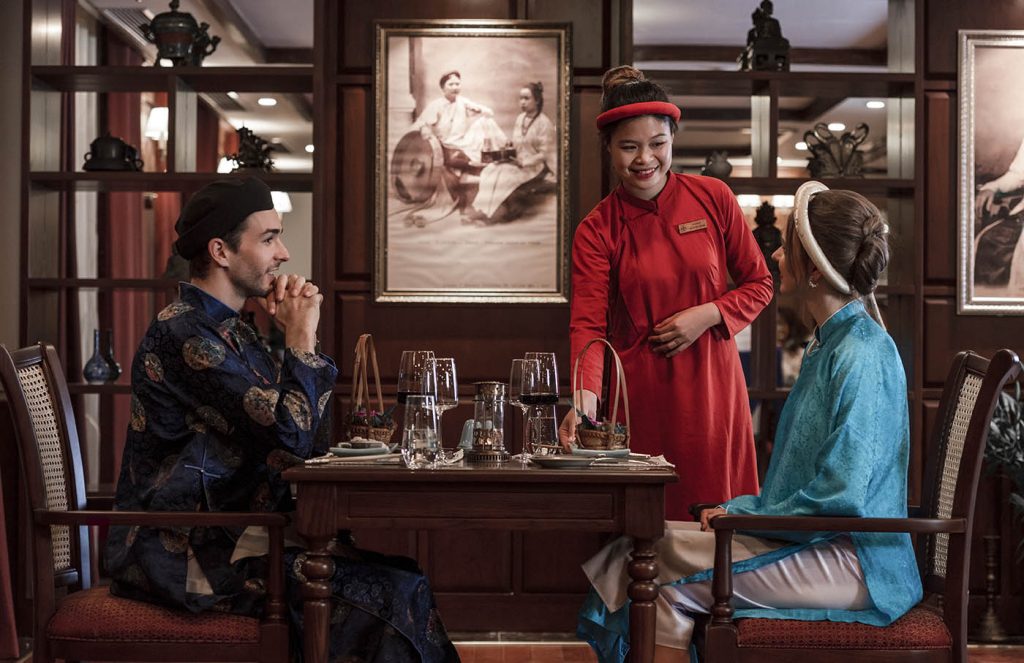
“Our cruises operate from Got Harbor in Haiphong for the day cruise, with scheduled one- or two-night programs such as the Heritage Discover and Heritage Explorer. In addition, three- to four-night Heritage Expeditions to the former trading seaport of Van Don and private charters for leisure and professionals are available upon request,” said Ha.
“Travel is all about places, experiences, and memories. We will first sail this brand through the karst seascape of the Cat Ba Archipelago, linking to Van Don, then we will cruise upstream and downstream from the highlands to the capital, Hanoi, and the Gulf of Tonkin over 8 days, following the old river trading waterway, Hanoi-Pho Hien-Van Don.”
“My goal is to gradually build maritime connections from north to south, staying two or three nights in each destination, as part of a 10-14 day expedition,” he said.

